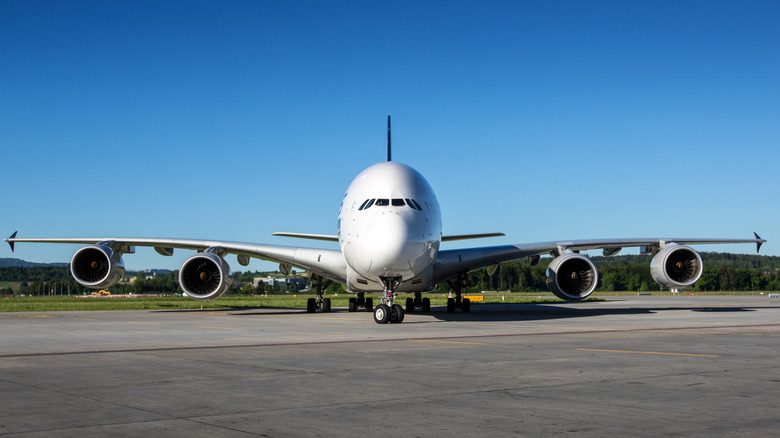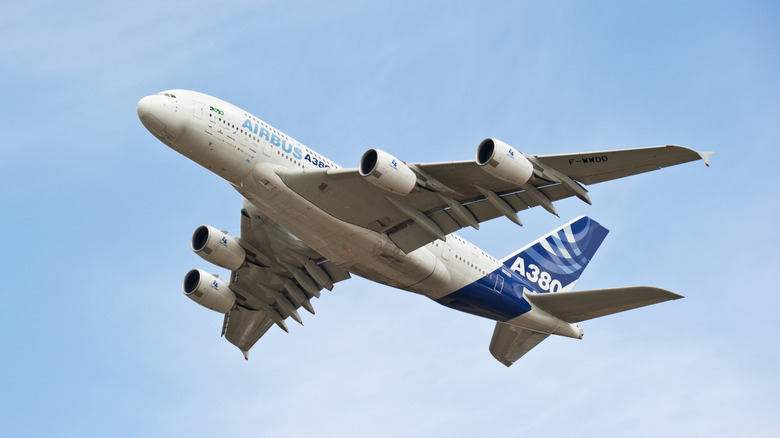
Jetlinerimages/Getty Images
Through the latter half of the 20th century, Boeing’s legendary 747 jet was the largest passenger aircraft in the air. But for much of the 21st century, that title has belonged to an aircraft from a different manufacturer, with Airbus’ A380 becoming the largest passenger aircraft in 2007. The road to earning that historical distinction was as lengthy as it was costly, with the A380 taking to the air only after enduring more than a decade’s worth of development that cost an estimated $34 billion.
Advertisement
If you’ve ever flown aboard an A380, you might argue the money was well spent, as the gargantuan, double-decker passenger jets arguably changed the game in terms of style and comfort. The same holds true for outright capacity, with the jets typically transporting more than 500 passengers per flight, and boasting a max capacity over 850. Over the years, Airbus claims A380s have flown more than 300 million passengers.
As the largest jet in the world, the A380 clocks in at 238.5 feet in length and boasts a wingspan of roughly 261 feet. Given its size, you’d be correct in assuming A380s weigh in on the heavy side, with the aircraft boasting a reported zero fuel weight of up to 369 tons (or roughly 813,506 pounds), and an estimated empty weight of 285 tons (about 628,000 pounds). Yes, those numbers also make it the heaviest passenger plane in existence.
Advertisement
The Airbus A380 can carry a seriously heavy load

Asmithers/Getty Images
At that size, the Airbus A380 requires a lot of people to operate, with the jets reportedly utilizing 23 crew members and 21 flight attendants per flight. The massive planes are so big they even require the assembly of special gates that can accommodate their size.
Advertisement
If you think the vessel’s empty and zero fuel weights are impressive, your mind may be blown when you learn the A380’s maximum takeoff weight is a staggering 560 to 575 tons. That means the jets can carry anywhere between 1,235,000 to 1,268,000 pounds at takeoff. As you might expect, size and cost helped limit the market for the Airbus A380, with the jet’s price per unit (about $445 million new) being one of several contributing factors to its failure. In the end, the Airbus reportedly produced just 252 of the 500 units initially planned.
Given those numbers, it wasn’t entirely a shock when Airbus opted to cease production of the A3980 back in 2021. That decision was likely made, in part, due to the issues faced by the travel industry at large at the height of the COVID-19 pandemic, with airlines like Emirates and Lufthansa not booking enough passengers to cover the cost of operating A380s. However, with travel once again on the rise, so too are sightings of A380s on runways and in the skies. Assuming that trend continues, they’ll likely continue to appear on both for many years to come.
Advertisement